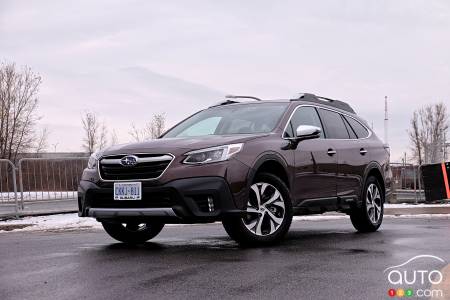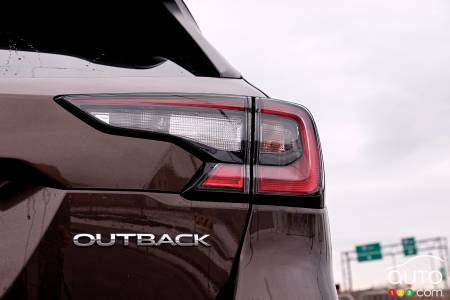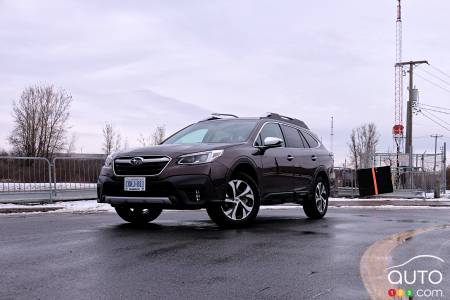Auto123 reviews the revised 2020 Subaru Outback
At first glance, the 2020 Subaru Outback hasn't changed much. Aside from a few cosmetic adjustments, the 2020 model looks very similar to its predecessor. But changes there are; while those made by the Japanese manufacturer to the Outback are hidden, they are nonetheless noticeable in use. As much as the 2019 edition had a tendency to leave users indifferent, with this new model it’s immediately clear there have been changes - good ones. From a couch potato to athlete, or just about!
Subaru drivers - or should we say enthusiasts - know they're driving a reliable vehicle that's tough and rugged and stands the test of time. Subaru knows not to mess too much with its recipe, and thus the cosmetic changes are minor and the transformations that do take place are out of sight. These improvements touch especially on comfort, overall vehicle dimensions and safety.
Auto123 launches Shopicar! All new makes and models and all current promotions.
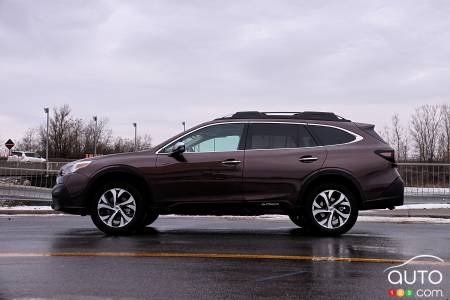
On the outside, a few subtle hints do help distinguish the new Outback from the old: LED headlights and vertically positioned fog lights. LED lights are also available in the rear.
While the visible changes are relatively minimal, the all-new platform considerably improves the car's handling. The Outback is wider and structurally stronger than the previous version. On the suspension side, there have also been upgrades resulting in a much more balanced vehicle. Ground clearance is now 220 mm, useful for winter driving or when venturing off-road.
The interior
The new platform also allowed Subaru to offer Outback occupants more room on board. You can easily feel it in the front seats and even more so in the back. At the same time, the designers also wanted to improve seating, and the result is more than conclusive. That's the single biggest improvement we noted driving the new Outback. Seating comfort has been greatly improved and the model really has nothing to envy versus certain more-luxurious models.
On a five-hour round-trip drive from Montreal to Quebec City we took during our week, everyone on board agreed that the seating comfort was exceptional.
A long trip with passengers on board means a need for cargo space. Again, the new platform translates into remarkable trunk space. In addition to the floor being completely flat, cargo space can be increased from 920 to 2,144 litres when the second row seats (60/40) are folded down. All in all, outdoor enthusiasts will be delighted to be able to cram all their gear in. And if there's ever a lack of room inside, there are the roof rack side rails with hinged crossbars that come standard on all versions that can accommodate a roof box.
Other major interior changes include the infotainment system. The base model offers two 7-inch touchscreens and features Carplay and Android Auto integration. Starting with the Touring version, there's an 11.6-inch touchscreen on which you access functions like heating, radio and navigation, among others. This interface is used a bit like a big tablet.
Again, as in all other vehicles that use this system, you often take your eyes off the road to look for features. Luckily, the Outback includes buttons for the heating functions, at least for adjusting the temperature. The same goes for the audio volume, a button being located next to the driver. While Apple CarPlay and Android Auto are integrated into the 11.6-inch interface, they’re displayed on a third of its total space. So the advantage is that you have access to the other options of the "tablet", but the display of CarPlay or Android Auto is pretty small. There is no other display option available.
Nevertheless, a week of testing was plenty of time to get used to this big central interface. One other note: if you’re not a cold weather person, you’ll be glad to learn that the Outback’s heating system is really powerful. The heat arrives quickly and from the get-go you feel a constant heat in the vehicle. Very positive point given our climate...
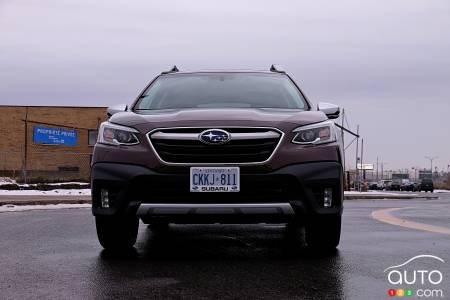
The mechanics
The Premier version we drove is powered by a 2.5L engine. Although Subaru says it's new, power is almost identical to the old 4-cylinder. With an increase of only 7 hp and 2 lb-ft of torque, the difference doesn’t jump out at you.
With 182 hp and 176 lb-ft of torque under the hood, you don't expect to be slammed in the seat every time you accelerate, and you’re not. But after a week of testing and close to 800 km of driving, this engine gradually made itself appreciated. It does the job - just don't push it too hard if you don't want to hear it complain, which it will do immediately.
On the other hand, drivers who prioritize fuel economy will be more than satisfied. Our average for the week ended with fuel consumption around 9.3L/100 km.
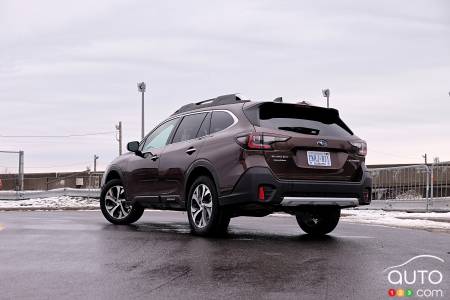
If you want more mustard on the hot dog, the 2.4L 4-cylinder turbocharged engine is also on offer, Subaru having abandoned the V6 engine. The manufacturer preferred to turn to this unit, which develops 260 hp and 277 lb-ft of torque and promises to be more lively and inspiring than the 2.5L version.
Both the engines work in concert with a new CVT transmission, which we have to grant is more fluid than certain others of its type. It mimics 8 speeds and you feel less of the CVT's elasticity ... unless you give the accelerator a big thump, at which point you grind you teeth and maybe plug your ears.

Safety
We can confirm it, there's safety tech galore in the Subaru Outback Premier 2.5! The brand prides itself on producing reliable and safe vehicles, and their products are undeniably so. Subaru seems to have overlooked no detail in this version.
We start with the EyeSight driver assistance system package, available on all versions. Two cameras are used to monitor the road, and the system is really effective. EyeSight includes lane keep assist, adaptive cruise control and Pre-collision braking, among others.
In this Outback Premier version, there's also a new safety system, but this one falls in the annoying-in-the-long-run category. The Driver Monitoring System (DMS) is effective at, well, monitoring, but it’s just as effective getting on the driver’s nerves! A driver-focused camera monitors the driver for signs of fatigue and inattention. It's a good idea, of course, but in reality, every time the driver's gaze moves to the right or left for more than two or three seconds, the system asks the driver to look at the road. If you delay obeying, the monitoring system produces a constant and irritating beeping sound.
You'd think that when you're driving on the highway using adaptive cruise control and lane keep assist, you could take your attention off the road for a few seconds ... well, you can’t. Of course, you can deactivate it, but at that point you lose the benefit of this active safety function.
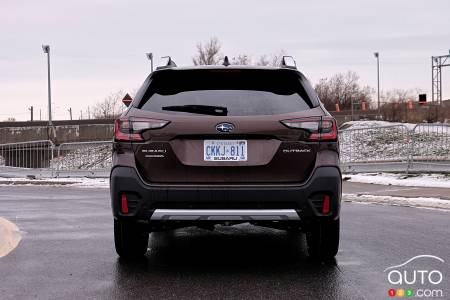
Despite these little irritants, our week behind the wheel of the 2020 Outback proved to be a very positive experience. It's a pleasant car to drive, thrifty and very spacious. It also offers a level of comfort worthy of a luxury car. The basic Convenience version starts at $32,808 and the scale goes up to $45,908 for the Premier XT version. In between are the Touring, Limited and Premier with the 2.5L engine, as well as the new Outdoor XT and Limited XT, which run on the 2.4L turbo engine.
We like
Interior space
Seating comfort
Innovative entertainment interface
Heating
We like less
Lack of interior storage
Wind noise on the highway
The buttons in the infotainment interface are small
